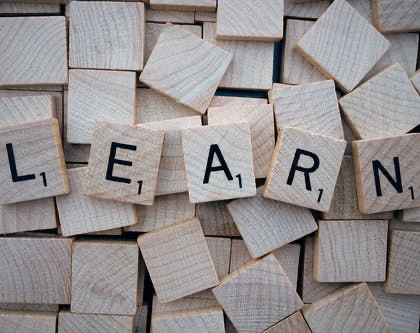Your preschooler flips through a book about dinosaurs, captivated by the colorful pictures but confused by the labels, arrows, and bold words scattered across the pages. Learning to navigate these text features is crucial for understanding non-fiction books and building early literacy skills.
What Are Text Features
Text features are the visual elements that organize information in non-fiction books. Unlike storybooks with continuous text, informational books use special design elements to help readers find and understand specific information quickly.
For preschoolers, the most important text features include pictures with labels, bold or colored words, simple diagrams, and clear section headings. These features make complex information accessible to young learners who are still developing reading skills.
Common preschool text features:
- Photographs and realistic illustrations
- Simple labels and captions
- Bold or colored words for emphasis
- Basic diagrams and cutaway views
- Clear headings and section dividers
- Contents pages with pictures
Understanding text features helps children become strategic readers who know how to gather information efficiently rather than getting lost in unfamiliar book formats.
Why Text Features Matter for Preschoolers
Text features serve as scaffolding that supports young children’s comprehension of complex topics. When preschoolers learn to use pictures, labels, and headings effectively, they can access information beyond their current reading level.
These visual supports are especially important for children who are still developing phonics skills. A preschooler who can’t read the word “elephant” yet can still learn about elephants by examining photographs, diagrams, and simple labels in informational books.
Benefits for early learners:
- Access to topics beyond reading level
- Development of visual literacy skills
- Introduction to academic text structure
- Building vocabulary through context clues
- Preparation for school-based learning
Text features also support different learning styles. Visual learners particularly benefit from the graphics and organized layout of non-fiction books, while all children develop important skills for navigating textbooks and reference materials they’ll encounter throughout school.
Essential Text Features for Preschool Age
Focus on the most accessible and useful text features for preschoolers rather than overwhelming them with every possible element they might encounter.
Pictures and Photographs
Real photographs help children connect book content to their world experiences. Point out how pictures show exactly what the text describes, helping children understand the relationship between words and images.
Labels and Simple Captions
Short labels that identify parts of pictures or provide additional information help children connect print with visual elements. Start with single-word labels before moving to short phrases.
Bold and Colored Words
Important vocabulary often appears in bold or different colors. Teach children that these special words are usually defined or explained nearby, making them easier to understand and remember.
Headings and Sections
Simple headings that organize information help children understand how topics are divided. Use headings to help children find specific information they’re interested in learning about.
Table of Contents
Picture-based contents pages show children how books are organized and help them locate specific topics of interest without reading through entire books.
Make Non-Fiction Engaging for Preschoolers
Young children often gravitate toward stories, so making informational books feel engaging requires intentional strategies that capture their natural curiosity.
Follow their interests: Start with topics your child already cares about – animals, trucks, cooking, or space. High interest makes children more willing to work through unfamiliar text formats.
Interactive reading: Ask questions that require children to use text features to find answers. “What does this diagram show us?” or “Can you find the picture that shows how butterflies grow?”
Hands-on connections: Connect book learning to real experiences. After reading about plants, examine real leaves and flowers. After learning about construction vehicles, watch them work at building sites.
Create your own: Help children make simple informational books about topics they know well – their pets, family, or favorite activities. Creating text features themselves deepens understanding of how they work.
Age-Appropriate Expectations
Set realistic expectations for preschoolers’ text feature understanding. They’re building foundational skills that will support more complex learning later.
What preschoolers can do:
- Identify pictures and photographs
- Notice when words look different (bold, colored)
- Use pictures to understand content
- Find specific images when asked
- Understand that labels tell us about pictures
What to work toward:
- Using headings to locate information
- Understanding that bold words are important
- Connecting labels to specific parts of images
- Recognizing that different books are organized differently
- Beginning to use table of contents
Remember that preschoolers are just beginning to understand how print works. Focus on exploration and discovery rather than mastery of specific skills.
Build Text Feature Awareness
Regular exposure to well-designed non-fiction books builds familiarity with text features naturally. Choose books with clear, age-appropriate features that support rather than overwhelm young readers.
Book selection tips:
- Choose books with excellent photographs or realistic illustrations
- Look for simple, clear labels and headings
- Select topics that genuinely interest your child
- Find books with good balance of text and visuals
- Avoid overly complex layouts that might confuse
Daily practice opportunities:
- Point out text features in environmental print
- Use cookbooks with pictures and labels
- Explore websites designed for children
- Look at magazines with clear photographs and captions
- Create simple charts and labels at home
The goal is building awareness and comfort with informational text formats rather than formal instruction in text feature terminology.
Support Non-Fiction Comprehension
Help preschoolers develop strategies for understanding informational books that will serve them throughout their educational experience.
Before reading strategies:
- Look at the cover and make predictions
- Flip through pages to see what topics are covered
- Identify familiar and unfamiliar elements
- Set purposes for reading based on child’s questions
During reading strategies:
- Pause to examine pictures and diagrams carefully
- Read labels and captions along with main text
- Ask questions about what the features show
- Make connections between text and visual elements
After reading strategies:
- Review favorite pictures or surprising information
- Discuss new vocabulary encountered in the book
- Make connections to personal experiences
- Plan related activities or find additional books on the topic
These comprehension strategies become automatic with practice and support children’s success with increasingly complex informational texts.
Build Lifelong Learning Skills
Teaching text features to preschoolers builds foundational skills for academic success and lifelong learning. Children who understand how informational books work become more confident and effective learners across all subjects.
These early experiences with non-fiction texts prepare children for the textbooks, reference materials, and digital resources they’ll encounter throughout school. More importantly, they develop curiosity about the world and confidence in their ability to find answers to their questions.
Start exploring text features today by choosing one interesting non-fiction book and taking a picture walk together. Point out the special features that help readers learn, and watch as your child develops the skills they need to become independent learners.
Ready to support your child’s exploration of informational texts with systematic skill-building? The Reading.com app includes activities that build the foundational reading skills preschoolers need to navigate both fiction and non-fiction books successfully. Our evidence-based approach helps children develop the confidence and competence they need for all types of reading. Start your 7-day free trial today and give your child the tools they need to explore the world through books!





